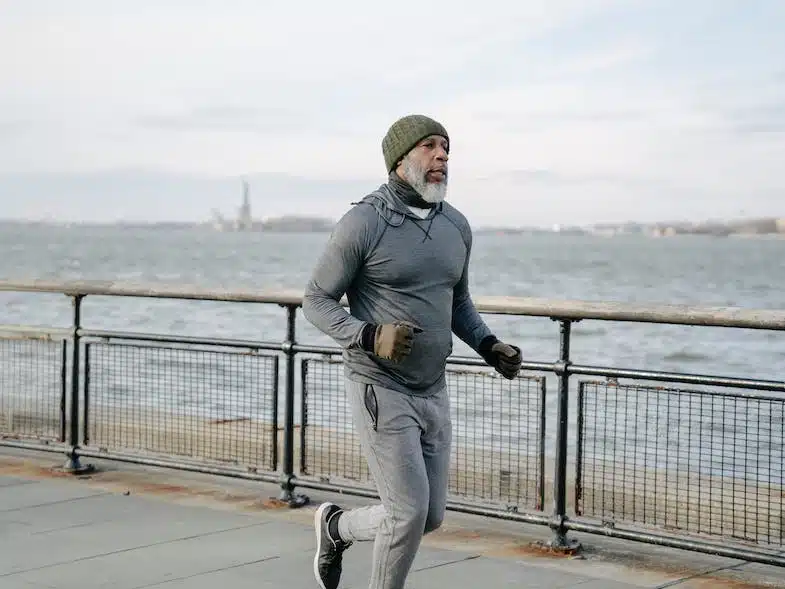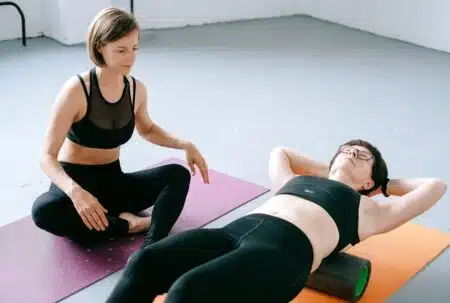Osteoporosis causes bones to become weak and brittle, losing mass over time until even mild stresses like bending over can cause a broken bone or fracture. If left untreated, osteoporosis can silently progress for years before leading to life-altering breaks. With proper prevention and management though, we can beat this “silent bone thief.”
What is Osteoporosis?
Osteoporosis occurs when our bodies lose too much bone mass through the ongoing bone remodeling process. Throughout our lives, old bone tissue gets broken down and replaced with new bone. It strikes when that bone breakdown overtakes the rebuilding, leaving us with a dangerous deficit and a high risk of fractures.
This condition can degrade all bones, but fractures often strike where the disease thins certain vulnerable sites like the hip, spine and wrist. These osteoporotic breaks can drastically impact mobility and independence – especially hip fractures, which leave nearly 1 in 4 seniors unable to walk independently again.
Understanding Bone Remodeling and Osteoporosis
Bone undergoes lifelong renewal, with special cells continuously dissolving old tissue and replacing it with fresh mineralized matrix. We reach peak bone mass around age 30, when this remodeling process maximizes bone density. Past that point the balance shifts, as resorption outpaces formation, and our skeletons slowly shed mass. For some people, the bone loss hastens into a condition we know as osteoporosis and many don’t know they have it to its silent progression.
While both sexes undergo age-related bone loss, women, including those with breast cancer, face extra vulnerability after menopause when plummeting estrogen levels quicken bone breakdown, leading to osteoporosis in postmenopausal women. Around age 65, women and men equally face an increased risk, losing bone rapidly.
We all experience remodeling fluctuations, but genetics and lifestyle factors differentiate who can weather that loss from who crosses into abnormally rapid, osteoporotic decline.
Diagnosis and Tests
Since osteoporosis has no symptoms initially, physicians diagnose it by comparing patients’ bone mineral density to norms through scans. Low Bone Mineral Density (BMD) signifies heightened fracture risk, indicating treatment for osteoporosis should commence before one can break a bone. Doctors often repeat scans every 1-2 years to monitor bone changes so they can track osteoporotic progression and adjust management plans accordingly.
Risk Factors for Osteoporosis
- Sex – Women suffer over 70% of osteoporosis fractures with extra risk after menopause
- Age – The older we get, the likelier bone loss will cross into osteoporosis
- Individuals of certain races, particularly whites and Asians, face an increased risk of developing osteoporosis.
- Family history – Those with close relatives who’ve had osteoporotic breaks are likelier to also develop the disease
- Small frame size – Less peak bone mass accrued while growing raises osteoporosis risk
- Hormone levels – Too much or too little of certain hormones, like estrogen or thyroid hormone, accelerate bone loss
- Steroids & other meds – Long courses of corticosteroid medicines often bring severe osteoporosis
- Diet & eating disorders – Low calcium over life, anorexia, bulimia and related starve/purge cycles degrade bone
- Sedentary lifestyle, smoking, and heavy alcohol intake all increase the risk of developing osteoporosis by negatively impacting bones.
We cannot change risk factors like sex or genetics. Understanding personal risks, like a family history of osteoporosis, allows tailored prevention and early intervention when bone density tests indicate potential issues.
Nutrition Fundamentals for Healthy Bones
Balanced nutrition provides essential building blocks for lifelong bone health. Calcium and vitamin D are particularly vital.
Getting Enough Calcium
99% of the body’s calcium gets stored in bones, so shorting calcium intake starves skeletal integrity. The Institute of Medicine recommends:
- 1,000 mg calcium daily for men and premenopausal women
- 1,200 mg daily for postmenopausal women and men over 70
Dairy products provide a calcium jackpot, with yogurt, milk and cheese as top sources. Fortified plant milks and juices, canned fish with edible bones, calcium-set tofu, dark leafy greens, and soybeans also contribute to maintaining healthy bone density and can aid in treating osteoporosis.
Many people fall shorts on calcium levels, especially those avoiding dairy. Supplements can fill gaps and reduce your risk, with forms like calcium citrate generally better absorbed than counterparts like calcium carbonate. But too much calcium hampers iron and zinc absorption while potentially raising heart disease risks, so experts warn supplement-users not to exceed 2,000 mg daily.
Getting Enough Vitamin D
Vitamin D also profoundly impacts bone metabolism. Our skin synthesizes vitamin D when exposed to UVB sunlight. But aging, darker complexion, regularly covering skin, living in higher latitudes with less sun exposure, and using sunscreens all reduce natural vitamin D production.
Low vitamin D threatens calcium absorption and bone formation, while leaving skeletons vulnerable to elevated resorption. Deficiencies, especially like osteopenia, correlate strongly to osteoporosis progression.
To hit vitamin D targets, oily fish, eggs, vitamin D-fortified foods and moderate sun can help. Those at higher deficiency risk may require supplements, with current vitamin D intake recommendations standing at:
- 600 IU daily, up to age 70
- 800+ IU daily for older adults
Weight-Bearing Activity for Stronger Bones
Our bones constantly adapt to withstand the physical loads and impact forces placed on them. Weight-bearing exercises mimic those stresses, triggering remodeling processes that ultimately increase bone strength.
Any weight-bearing physical activity helps strengthen bones by:
- Stimulating osteoblasts to grow fresh mineralized bone matrix
- Limiting osteoclast over-activity
- Improving balance and stability can reduce your risk of fractures.
Ideal choices like running, jumping, aerobics, tennis and stair climbing focus osteoporosis prevention and treatment on hips and spine – common fracture sites. Strengthening muscles via resistance training also builds supportive bone in those regions.
Starting young lays the best foundation, as youth is when most bone accumulation occurs. But beginning weight-bearing activity at any age can still boost bone density, even helping reverse osteoporotic losses in senior years. The key is choosing enjoyable activities you’ll stick with long-term.
Osteoporosis Treatments
If osteoporosis risk factor modification cannot control bone loss alone, doctors may prescribe medication. Potent antiresorptive drugs like bisphosphonates help tip remodeling balance from excessive breakdown back toward bone rebuilding. These treatments may increase bone density while lowering fracture chances up to 70% over 3-5 years.
Raloxifene provides another anti-osteoporotic option for postmenopausal women. Unlike bisphosphonates which accumulate indefinitely in bone, raloxifene remains metabolized fairly rapidly, losing potency after discontinuation. But for women wanting short-term treatment, injection can significantly improve spine health and reduce their risk.
To treat osteoporosis, doctors also utilize anabolic agents like teriparatide to stimulate bone formation directly. But there are some restrictions since overactivating osteoblasts risks bones becoming disorganized rather than stronger, increasing the risk of fracture.
Treatments for osteoporosis carry some risks too, from rare jaw osteonecrosis with bisphosphonates to stroke and blood clot dangers with raloxifene. Doctors and patients must together weigh benefits against potential side effects for personalized care.
Stopping Osteoporosis through Early Action
Osteoporosis often sneaks up silently as we age before suddenly making its presence painfully known through debilitating fractures. But understanding individual risks, getting frequent scans, and modifying controllable factors can together stop this stealthy bone deterioration before it undercuts mobility and independence.
Commit now to safeguarding your long-term bone health through nutrition, exercise and early medical intervention when needed – before osteoporosis can gain the upper hand as the silent bone thief.



